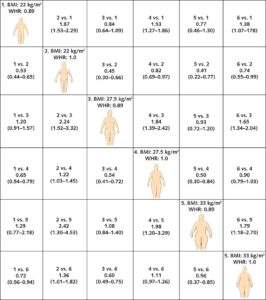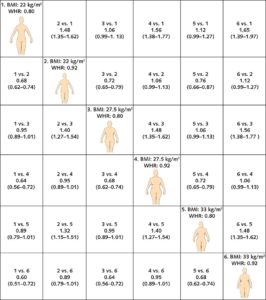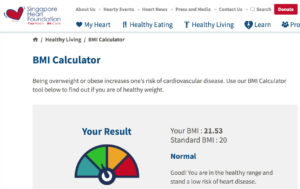6 September 2020
New Research: Normal-Weight Central Obesity – A major risk factor for cardiovascular disease

The one thing that is on most people’s mind for most of the time is our weight and the amount of fat that we accumulate in different parts of our body. Hence, I want to write about a really interesting research paper that was actually published in 2015, but whose findings are quite astonishing.
We have two types of fat, subcutaneous adipose tissue (the fat below our skin) and visceral adipose tissue (the so-called belly fat, also known as the beer belly). Visceral adipose tissue is the fat that is inside our abdominal cavity, where it surrounds our internal organs. Visceral adipose tissue is metabolically very active and can quickly release fatty acids. This is why it is an important energy reserve. Men tend to have more belly fat. It is also well known that visceral adipose tissue is much more harmful to humans. Because of it, doctors and researchers coined the term “central obesity”.
In the 2015 study, a group of researchers assessed the risk of dying (mortality risk) in persons who have central obesity with a normal Body Mass Index (BMI) compared with individuals who according to their BMI are overweight or obese.
In the study, the researchers examined more than 15000 men and women, who all had their BMI and waist-to-hip ratio (WHR) measured. BMI is the traditional measure to determine if someone is overweight or obese (a normal BMI is between 18.5 to 24.9 , the BMI of an overweight person between 25 to 29.9, and the BMI of an obese person greater than 30.0 kg/m2). The waist-to-hip ratio is a measure of central obesity. A high waist-to-hip ratio indicates a relative increase in visceral adipose tissue (belly fat).
What the study found is firstly that the waist-to-hip ratio, but not the BMI, was associated with high mortality risk. Hence, the BMI may not be a very good indicator of our cardiovascular disease risk.
The study also found that among men with normal BMI, those with an increased WHR had greater mortality compared to those with normal WHR. The same is true for men with a BMI in the overweight range and for men with an obese BMI. These results are all expected. But here come the really surprising findings. Men with a normal BMI but increased WHR had the highest mortality rate of all groups. Their mortality rate was even higher than the mortality rate of overweight and obese subjects with increased WHR. In other words, for normal-weight men having visceral fat is much more harmful than if an overweight or obese person has visceral fat. This suggests that while visceral adipose tissues causes early death, subcutaneous adipose tissue is actually beneficial.
Here is a summary of the data in men:
The cells in the figure show the group of interest versus the reference group. For example, if we choose the normal-weight, centrally obese men (profile 2: BMI = 22 kg/m2; WHR = 1.0) as reference group and compare this group with the obese (based on BMI) but not centrally obese group (profile 5: BMI = 33 kg/m2; WHR = 0.89), then we need to look at the second last cell in column 2 (2 vs.5). The cell indicates that group 2 has a 2.42 higher risk for cardiovascular death compared to group 5). Likewise, if we compare the normal-weight, centrally obese men (profile 2) with the obese (based on BMI) and centrally obese group (profile 6), we see in the bottom cell in column 2 that group 2 still has a 1.36 fold higher risk of cardiovascular death.
Similar, although less pronounced trends were found in women. This may perhaps be related to the hormonal differences in women:
What could be the reasons for the beneficial effects of subcutaneous fat? Firstly, subcutaneous fat is known to release beneficial hormones (adipokines), such as leptin and adiponectin. These hormones reduce our appetite, increase our energy expenditure and improve the cellular response to insulin. Another advantage of subcutaneous adipose tissue is that it is a safe storage organ for fats and prevents lipids from being present in the blood circulation, where it could lead to arteriosclerosis. Subcutaneous adipose tissue also prevents fats from accumulating in other organs, like the liver and muscle, where lipids can do a lot of harm.
The paper also highlights that normal weight individuals with central obesity are generally not considered an at-risk-population, and hence this group is often excluded from preventive and intervention-based measures. (See for instance below the BMI calculator of the Singapore Heart Foundation, which suggests that if we are in the normal BMI range, we stand a low risk of heart disease). But we should be worried. The good news is that given the high metabolic activity of visceral adipose tissue, it is much easier to lose the belly fat through exercise and dieting compared to losing subcutaneous tissue.
So what is your WHR?



